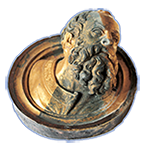Speaker
Description
With its diverse irradiation positions and very pure thermal neutron flux, the reactor FRM II offers good opportunities for investigations of chemical element composition in samples from different research fields. The reasons for using the instrumental NAA are based on the advantages of simple sample preparation without chemical handlings, high sensitivity, multi-element capability from the main and minor elements to the trace elements and non-destructiveness. The so-called “finger print” method of analysis of element composition can bring light into the darkness of the puzzles of archaeological materials or other art objects and give us more details about their provenances and relationships.
Some interesting objects investigated in the last years, such as old ceramics from the Far East, a European medieval bronze object, jewels of gold and pigments used in the renaissance and in the modern time will be introduced in our presentation. Within a special research program designed for high school students namely TUMKolleg, we are just starting a new project for analysis of ceramic sherds directly from the excavation site in Naga, Sudan. Naga was an important city of the Kingdom of Meroe, which was a neighbor and also a powerful rival of Ptolemaic and Roman Egypt in that time. The city has remained untouched under the earth for almost two thousand years. Now, Naga has become a wonderful research ensemble for the archaeologists since the excavation in 1990s.

